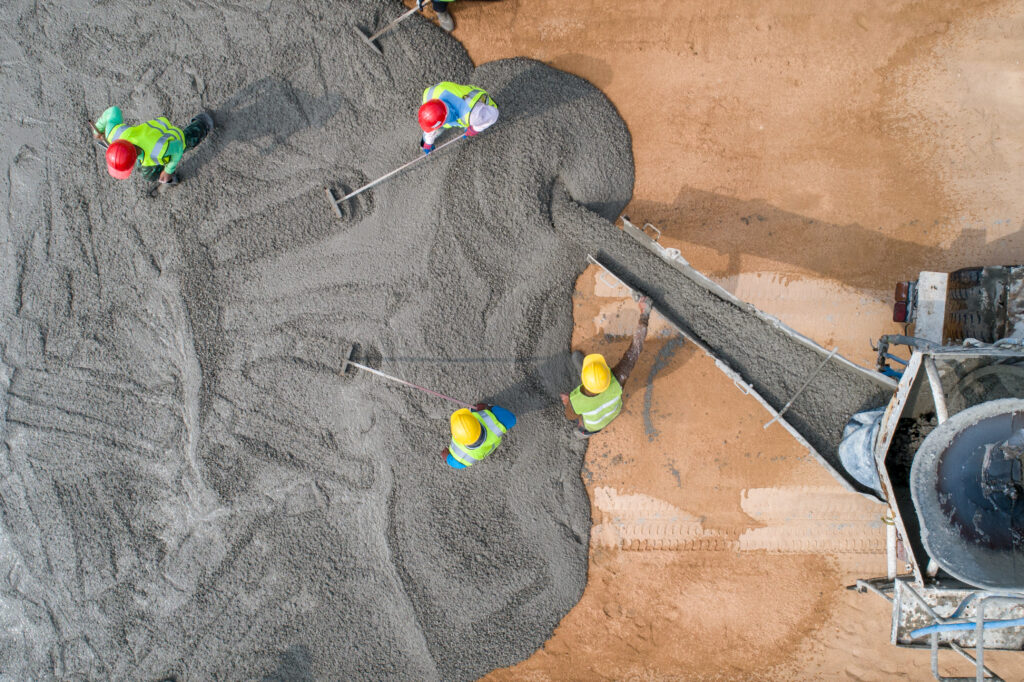CASE STUDY
Calcium Carbonate for Stronger
and More Sustainable Concrete
and More Sustainable Concrete
CASE STUDY
Calcium Carbonate for Stronger
and More Sustainable Concrete
and More Sustainable Concrete
Case Studies > Calcium Carbonate for Stronger and More Sustainable Concrete
Case Study Overview
Industry
Construction and Engineering
Challenge
Formulate concrete with the necessary strength and durability requirements, while also using sustainable materials and processes.
Solution
Calcium carbonate can be used to produce concrete with enhanced properties, while making use of cost effective and sustainable materials.
Outcome
Production of one of the most used construction materials with a lower environmental impact and improved properties.
Summary
Concrete is among the most widely used construction materials in the world. Concrete is a mixture of water, aggregate, and cement. Aggregates include materials such as sand, stone, and gravel, and constitute most of the composition of concrete. Cement is the binder that holds the aggregate together and provides the strength of the concrete. One ingredient that may be found in cement formulations is calcium carbonate (CaCO3), which is a naturally occurring mineral found in many places across the world. Calcium carbonate has been used in concrete production for millennia and is still widely used today due to its numerous benefits, which has been further elucidated with recent research.
Background
One of the earliest known instances of calcium carbonate in concrete was by the ancient Romans. The Romans used a type of concrete made from a mixture of volcanic ash, lime, and seawater, which contained high levels of calcium carbonate. This concrete was used to construct a wide range of structures, including some of Rome’s most famous buildings such as the Colosseum, Pantheon, and many of their aqueducts. The testament to the strength of their concrete is that many of these buildings still stand today, and much of their damage comes from war and scavenging, rather than natural weathering and degradation.
Recent and closer examinations of Roman concrete revealed that there is a ubiquitous presence of small white mineral features, which originate from lime, the key component of all concrete formulations. While previously considered evidence of poor-quality raw materials, this new research suggests an entirely different perception. It appears that a combination of the choice of materials and the processes used in manufacture, produce “lime clasts” that provide a self-healing capability to the concrete. These inclusions were determined to be made of calcium carbonate at high temperatures with quicklime.
There remains ongoing research into how calcium carbonate has been used to make some of the most durable concrete in history, and better understand how it can be used to further improve modern concrete formulations. Calcium carbonate’s properties are complemented by its low cost, wide availability, and sustainable nature, making it a near ideal material for concrete.

Background
One of the earliest known instances of calcium carbonate in concrete was by the ancient Romans. The Romans used a type of concrete made from a mixture of volcanic ash, lime, and seawater, which contained high levels of calcium carbonate. This concrete was used to construct a wide range of structures, including some of Rome’s most famous buildings such as the Colosseum, Pantheon, and many of their aqueducts. The testament to the strength of their concrete is that many of these buildings still stand today, and much of their damage comes from war and scavenging, rather than natural weathering and degradation.
Recent and closer examinations of Roman concrete revealed that there is a ubiquitous presence of small white mineral features, which originate from lime, the key component of all concrete formulations. While previously considered evidence of poor-quality raw materials, this new research suggests an entirely different perception. It appears that a combination of the choice of materials and the processes used in manufacture, produce “lime clasts” that provide a self-healing capability to the concrete. These inclusions were determined to be made of calcium carbonate at high temperatures with quicklime.
There remains ongoing research into how calcium carbonate has been used to make some of the most durable concrete in history, and better understand how it can be used to further improve modern concrete formulations. Calcium carbonate’s properties are complemented by its low cost, wide availability, and sustainable nature, making it a near ideal material for concrete.

Calcium carbonate has been used to make some of the most durable concrete in history, and it's properties are complimented by its low cost, wide availability, and sustainable nature, making it a near ideal material for concrete.
Noah Chemicals, Chief Chemist

Evaluation
Calcium carbonate offers several advantages as a component of concrete, the first of which being its increased strength. This is achieved by reducing the permeability of the concrete, making it more durable and resistant to weathering, cracking, and other forms of damage. Furthermore, recent research suggests that calcium carbonate also offers improved strength through its self-healing abilities. During the hot mixing process, lime clasts develop a characteristically brittle nanoparticle architecture, producing a reactive source of calcium, and potentially providing self-healing functionality. When tiny fractures appear in the concrete, they can preferentially travel through the high-surface-area lime clasts. Subsequently, there may then be a reaction with water, creating a calcium-saturated solution that can recrystallize as calcium carbonate to fill the crack, or alternatively react with other materials to form even stronger composite materials. These processes take place spontaneously, “healing” the fractures before they can spread to the broader structure.
While offering enormous benefits to the properties of concrete, it is also a highly sustainable material. Calcium carbonate is a naturally occurring mineral, making it a more sustainable alternative to synthetic materials. Furthermore, due to its geographic abundance, it can often be produced locally, reducing the carbon footprint associated with transportation. Calcium carbonate is a relatively inexpensive material, making it an attractive option for concrete production. On top of this, calcium carbonate can reduce the total amount of cement required, further reducing the cost of concrete production. Calcium carbonate also improves the workability of concrete, making it easier to mix and pour. This can save time and costs by increasing the efficiency during construction. For a description of calcium carbonates additional benefits in concrete, please see our blog: Calcium Carbonate (CaCO3) in The Concrete Industry and It’s Carbon Footprint Reduction.

Conclusion
Calcium carbonate has been used in concrete production for millennia and continues to be widely used today due to its numerous benefits. Its use in concrete has been instrumental in the construction of many of the world’s most famous structures, many of which are still standing today millennia after their construction. With its strength-enhancing properties, sustainable production, reduced cost, and improved workability, calcium carbonate remains a key ingredient in concrete production.
Work with Us
Begin your partnership with Noah Chemicals and our expertise
to work at solving your most complex challenges.